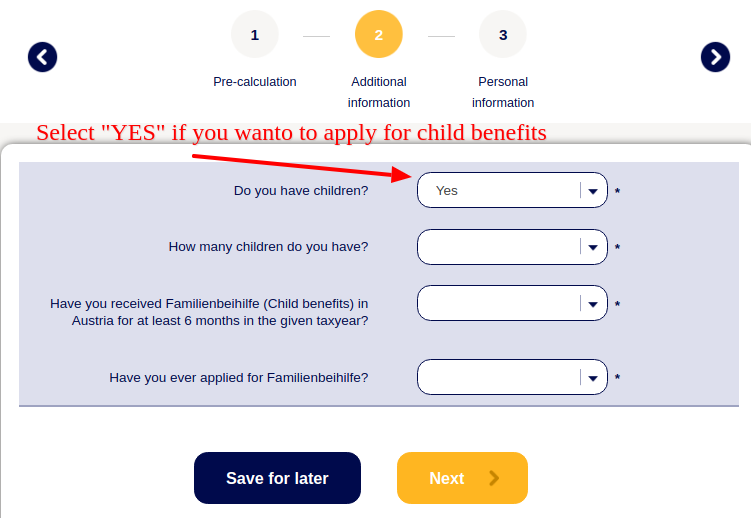Navigating the tax landscape as a non-resident worker in a foreign country can be a daunting task. However, understanding the process and knowing the steps to apply for a tax refund can save you both time and money. This article provides a comprehensive guide on how to apply for a tax refund if you’re working in Austria, Belgium, or the Netherlands. By breaking down the process country by country, we aim to make it easier for you to reclaim any overpaid taxes.
Navigating Tax Refunds as a Non-Resident Worker
Working abroad comes with its own set of financial challenges, and one of the most significant is understanding your tax obligations. As a non-resident worker, you are generally taxed only on the income earned within the country where you are employed. However, tax systems vary significantly from one country to another, and knowing how to navigate these differences is crucial for ensuring you don’t overpay.
For instance, in Austria, non-resident workers are subject to a progressive tax rate on their income, but they may not be eligible for the same deductions and credits as residents. Similarly, Belgium and the Netherlands have their own unique tax codes and regulations that determine how non-residents are taxed. Understanding these nuances is essential for anyone looking to maximize their tax refund.
Moreover, many non-resident workers are unaware that they may be entitled to a tax refund due to various factors such as overpayment, tax treaties, or specific deductions available to non-residents. By being proactive and informed, you can ensure that you reclaim any overpaid taxes, thereby optimizing your financial situation while working abroad.
Steps for Claiming Refunds in Austria, Belgium, Netherlands
Austria
-
Gather Necessary Documents: The first step in claiming a tax refund in Austria is to collect all relevant documents, including your payslips, annual salary statement (Lohnzettel), and proof of any taxes paid. You will also need your identification documents and, if applicable, a certificate of residency from your home country.
-
File Your Tax Return: Non-resident workers must file an income tax return (E1 form) with the Austrian tax office (Finanzamt). The deadline for filing is generally the end of April for the previous tax year. Ensure that you fill out the form accurately, including all sources of income and any deductions you are eligible for.
-
Submit and Follow Up: After filing your tax return, submit it to the Finanzamt either online or via mail. It’s advisable to follow up with the tax office to confirm receipt and processing of your return. Once processed, any refund due will be transferred to your bank account.
Belgium
-
Prepare Your Documentation: In Belgium, you will need your payslips, a summary of your earnings (Fiche 281.10), and any receipts for deductible expenses. Non-residents may also need to provide proof of residency from their home country to benefit from certain tax treaties.
-
Complete the Tax Return: Non-residents must fill out the Belgian tax return form (Form 276) and submit it to the Federal Public Service Finance. The deadline for submission is usually around the end of June for the preceding tax year. Be meticulous in reporting your income and claiming any applicable deductions.
-
Submit and Track: Once your tax return is completed, submit it either electronically through the Belgian tax portal or by mail. Keep a copy of your submission for your records. Tracking the status of your return can be done through the tax portal, and any refund will be credited to your bank account once processed.
Netherlands
-
Collect Necessary Information: To claim a tax refund in the Netherlands, gather all payslips, the annual income statement (jaaropgave), and any documentation for deductible expenses. Additionally, you may need a certificate of residency from your home country.
-
File Your Tax Return: Non-residents should submit a tax return using the M form, specifically designed for those who have lived or worked in the Netherlands for only part of the year. The deadline for filing is typically May 1st for the previous tax year. Ensure all income and deductions are accurately reported.
-
Submit and Monitor: You can submit your tax return online via the Dutch tax authority’s website (Belastingdienst) or by mail. After submission, keep an eye on the status of your return through the online portal. Refunds are usually processed within a few months and will be deposited into your bank account.
Applying for a tax refund as a non-resident worker in Austria, Belgium, and the Netherlands may seem complex, but with the right information and preparation, the process can be straightforward. By understanding the specific requirements and deadlines in each country, you can ensure that you reclaim any overpaid taxes. Whether you’re working in Vienna, Brussels, or Amsterdam, being proactive about your tax obligations can lead to significant financial benefits. Always remember to keep thorough records and seek professional advice if needed to navigate the intricacies of international tax laws effectively.
